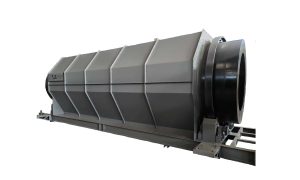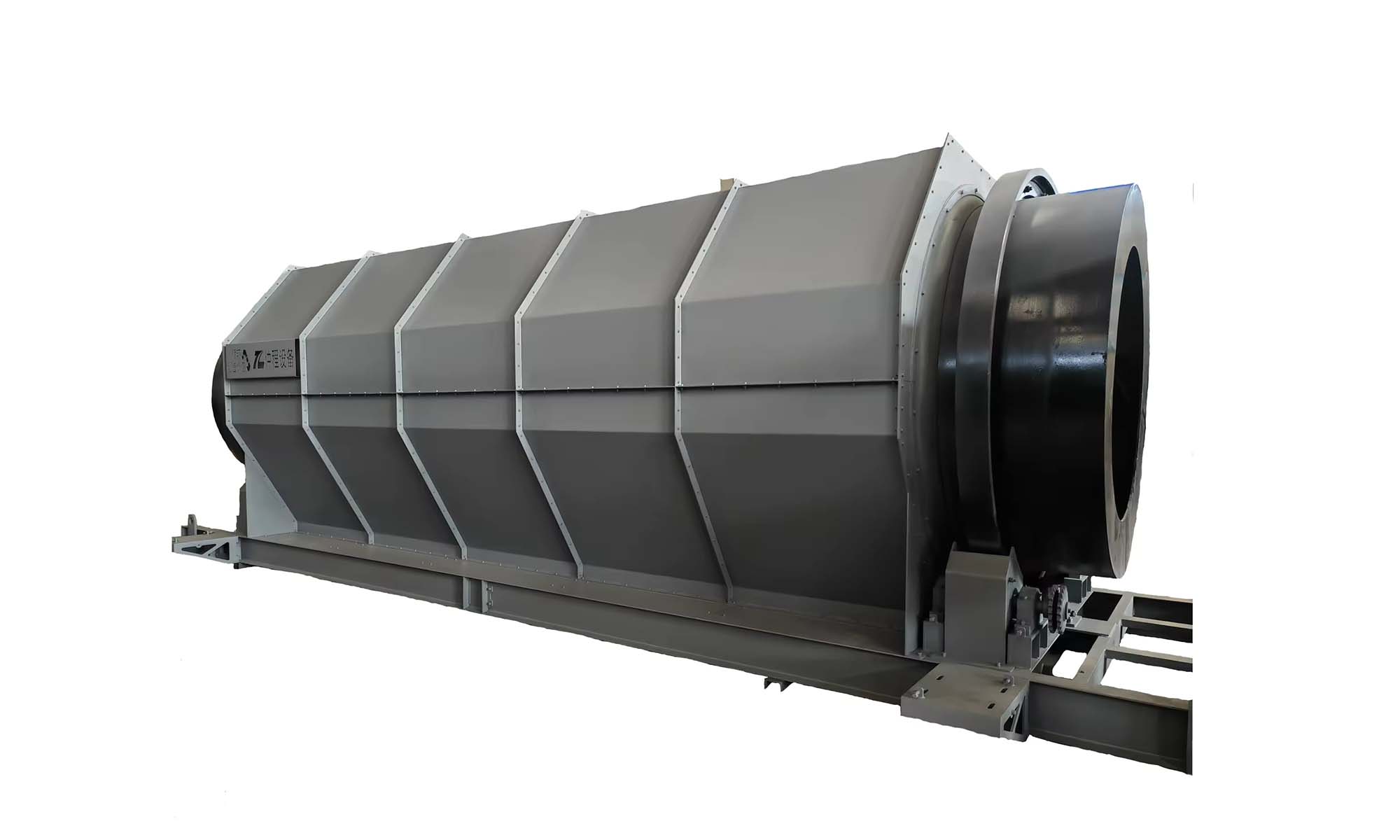A trommel screen, also known as a trommel unit, is a type of mechanical screening machine used to separate materials by size and to sort materials in various industries. It consists of a rotating cylindrical drum that filters and classifies materials through a series of screens or perforations. Trommel screens are commonly used in waste management, mining, and recycling applications to separate and size different types of materials.

Components
- Drum/Cylinder
- Material: Typically made from heavy-duty steel or stainless steel for durability.
- Design: A cylindrical drum that rotates around a horizontal or inclined axis.
- Surface: Equipped with screens or perforations of various sizes to allow material separation.
- Drive System
- Motor: Powers the rotation of the drum.
- Gearbox: Transmits power from the motor to the drum.
- Drive Mechanism: Includes belts, chains, or direct drive systems to rotate the drum.
- Feed Hopper
- Material: Made from steel or heavy-duty plastic.
- Design: Receives material from a conveyor or other feeding mechanism and directs it into the drum.
- Capacity: Sized based on the volume of material being processed.
- Discharge Chutes
- Material: Typically made from metal or plastic.
- Design: Directs separated material from the drum to different collection points.
- Function: Ensures that sorted materials are efficiently collected and directed to the appropriate locations.
- Screen Panels
- Material: Made from steel or other durable materials.
- Design: Perforated or mesh panels installed inside the drum to allow smaller particles to pass through while larger particles are retained.
- Size: Various sizes of perforations or mesh depending on the material and separation requirements.
- Frame and Support Structure
- Material: Constructed from steel for structural support.
- Design: Supports the drum, motor, and other components, ensuring proper alignment and stability.
- Controls
- VFD Control Panel: Allows operators to manage the operation of the trommel screen, including drum rotation speed and other settings.
- Sensors: Monitor the performance and operation of the trommel screen.
- Cleaning Mechanism (Optional)
- Type: Brushes, scrapers, or high-pressure water jets to prevent clogging and maintain screen efficiency.
- Design: Integrated into the drum or installed externally to keep the screen panels clean.
Working Principle
- Material Loading: Material is fed into the drum via the feed hopper.
- Rotation: The drum rotates, causing the material to tumble and move through the drum.
- Screening: As the material tumbles, smaller particles fall through the perforations or mesh of the screen panels, while larger particles are retained inside the drum.
- Separation: Separated materials are discharged through different chutes based on size or type.
- Discharge: The sorted materials are collected at the discharge points and directed to the next stage in the process.
Applications
- Waste Management: Separating recyclable materials from municipal solid waste and composting.
- Mining: Sizing and sorting ores, gravel, and other mined materials.
- Recycling: Separating different types of recyclables such as plastics, metals, and paper.
- Agriculture: Screening and sorting soil, compost, and other agricultural materials.
- Construction: Separating and sizing materials such as sand, gravel, and demolition debris.
Benefits
- Efficient Separation: Effectively separates materials by size, improving process efficiency.
- Versatility: Can handle a wide range of materials and sizes.
- Durability: Designed to withstand heavy loads and harsh operating conditions.
- Scalability: Available in various sizes and configurations to meet different capacity requirements.
- Low Maintenance: Requires minimal maintenance compared to other screening methods.
Design Considerations
- Material Type: Design the trommel screen to handle the specific type of material being processed, including its size, weight, and flow characteristics.
- Screen Size: Select appropriate screen panel sizes based on the desired separation and material characteristics.
- Capacity: Ensure the trommel screen is sized to handle the volume of material being processed.
- Drum Rotation Speed: Adjust the rotation speed to optimize the screening process for different materials.
- Environmental Conditions: Consider factors such as temperature, humidity, and exposure to chemicals when selecting materials and designing the system.
Typical Layouts
- Horizontal Drum: The drum is oriented horizontally, which is common for many trommel screens.
- Inclined Drum: The drum is inclined to facilitate material flow and separation, often used in applications where a higher discharge point is needed.
- Multi-Stage Trommel: Multiple trommel screens arranged in series to provide additional separation and classification.


